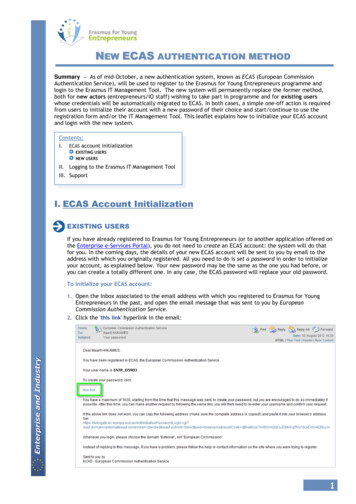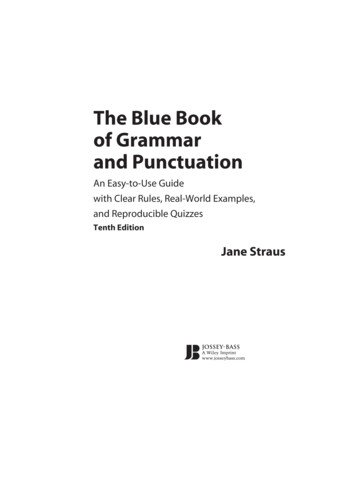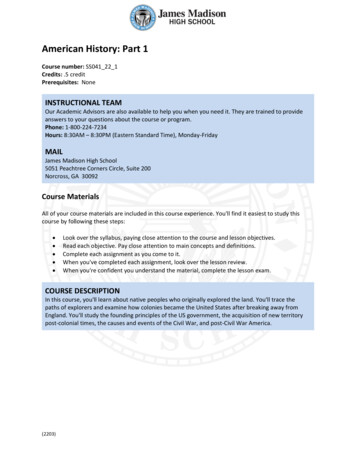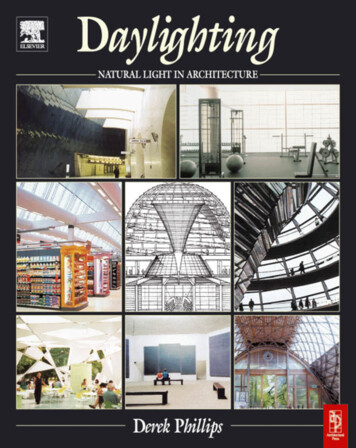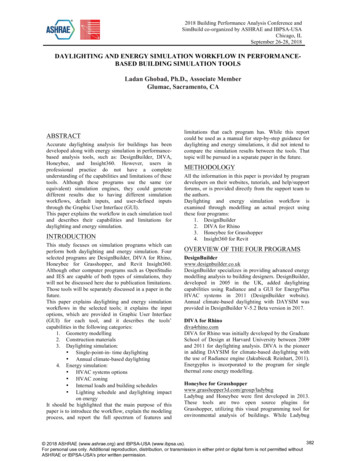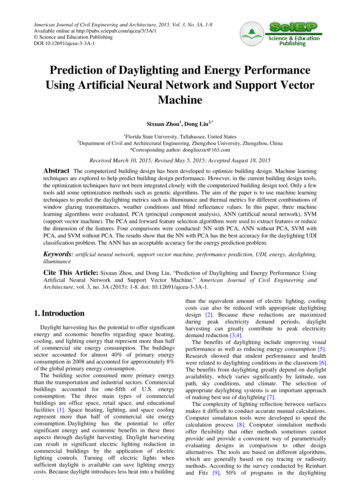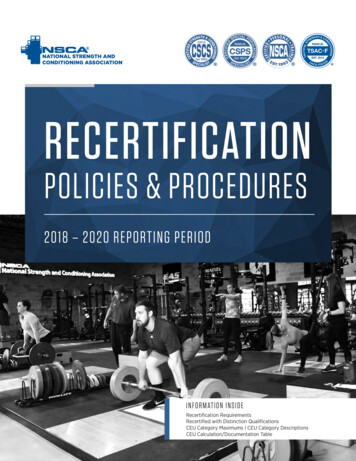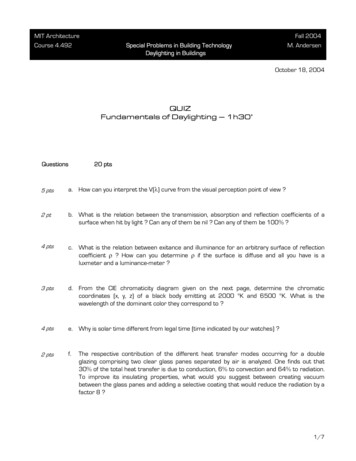
Transcription
MIT ArchitectureCourse 4.492Fall 2004M. AndersenSpecial Problems in Building TechnologyDaylighting in BuildingsOctober 18, 2004QUIZFundamentals of Daylighting – 1h30’Questions20 pts5 ptsa. How can you interpret the V(λ) curve from the visual perception point of view ?2 ptb. What is the relation between the transmission, absorption and reflection coefficients of asurface when hit by light ? Can any of them be nil ? Can any of them be 100% ?4 ptsc. What is the relation between exitance and illuminance for an arbitrary surface of reflectioncoefficient ρ ? How can you determine ρ if the surface is diffuse and all you have is aluxmeter and a luminance-meter ?3 ptsd. From the CIE chromaticity diagram given on the next page, determine the chromaticcoordinates (x, y, z) of a black body emitting at 2000 K and 6500 K. What is thewavelength of the dominant color they correspond to ?4 ptse. Why is solar time different from legal time (time indicated by our watches) ?2 ptsf.The respective contribution of the different heat transfer modes occurring for a doubleglazing comprising two clear glass panes separated by air is analyzed. One finds out that30% of the total heat transfer is due to conduction, 6% to convection and 64% to radiation.To improve its insulating properties, what would you suggest between creating vacuumbetween the glass panes and adding a selective coating that would reduce the radiation by afactor 8 ?1/7
2/7
Problems30 ptsI. The individual reading spaces of the Phillips Exeter Academy Library, located in Exeter (NewHampshire) and designed by Louis Kahn in 1967-1970, are positioned along the peripheryof the building, and are separated from the large central atrium by the rows of book shelves.In addition to the diffuse light brought in by the large superior windows, each reading cellbenefits from direct sunlight through a small lateral window positioned at desk height andequipped with a sliding wood blind. All four façades have been treated equally as far as solarprotections are concerned.Upper and lower windows pointed out on façadeIndividual reading cellsAxonometric viewDirect sunlight should be avoided on the work space at anytime.1 ptOn the plane and section views of individual reading cells given below, determine the limitangles α1, α2 and β1 for solar penetration and report the angles on the provided tracingpaper over the shadow protractor given on the next page, by shading the areascorresponding to sun directions for which the lower windows always benefit from totalprotection.Plane viewSection view3/7
Superpose the projected shadows on the stereographical view below (which corresponds tothe latitude 42 22'N of Exeter) for the four façade orientations.5 ptsAnalyze the solar penetration occurrences over the year for each façade orientation.Building’sorientation2 ptsWhat are the critical issues of choosing to have no solar protection for the upper windows ?1 ptWhat are the critical issues of having sliding wooden blinds for the lower windows as soleshading system ?4/7
II. In one of the exposition halls of the Kimbell Art Museum, located in Fortworth (Texas) anddesigned by Louis Kahn in 1972, you are making measurements by the zenithal opening aswell as below one of the halogen sources; you dispose of both a luxmeter and a radiometer.Exposition hall with redirecting skylight systemAxonometric viewOn your luxmeter, you get the following reading by the zenithal opening :which is expressed in klux.Exactly below the halogen source (considered a point source) andholding your luxmeter horizontally, you get the following reading, in lux:Now taking your radiometer, you check the energetic illuminance by thezenithal opening and get the following reading, in W/m2 :Finally, because of annoying visitors, you cannot get exactly below thehalogen source anymore with your radiometer and therefore decide tohold it horizontally 2m below the halogen source but at 45 off thevertical from the source. The reading you get is the following, in W/m2 :5/7
2 ptsWhat luminous efficiency do you deduce from your measurements for natural light, and whatis its unit ?7 ptsWhat luminous efficiency do you deduce from your measurements for the halogen source ?3 ptsWhat is the maximal luminous efficiency one can obtain with a source and what are thecharacteristics of this source ?3 ptsWhat are the critical issues of using zenithal natural light for a museum ? and of usingartificial light ?III. The architectural space of the church of the Convent of La Tourette is characterized bynarrow lateral and zenithal openings, actively taking part in the dynamic and richness of theluminous ambiances inside the church. These openings are of small area and of strongluminosity compared to the opaque parts of the envelope.On a sunny morning, you come in with a luminance-meter to take measurements from twodifferent points of view on either side of the seating rows and want to make statementsabout the visual comfort of the visitors and pilgrims.ESNWWhen you sit on the left hand side (point A on the illustration given on the next page), youmeasure luminances of 50, 3200 and 400 Cd/m2 coming from the left, middle and rightportions of your visual field respectively (LG, LC, LD on the drawing). When you sit on the righthand side, you measure 100 Cd/m2 from the middle (LC) and 2900 Cd/m2 from the right(LD).6/7
3 ptsWhat contrasts (luminance ratios) do you perceive and are they acceptable for visualcomfort recommendations ?3 ptsCalculate what these contrast values would become if the walls were painted in white (ρ 0.7) rather than being bare concrete (ρ 0.3).7/7
Course 4.492 Special Problems in Building Technology M. Andersen Daylighting in Buildings October 18, 2004 QUIZ Fundamentals of Daylighting - 1h30' Questions 20 pts . Exposition hall with redirecting skylight system Axonometric view On your luxmeter, you get the following reading by the zenithal opening :

